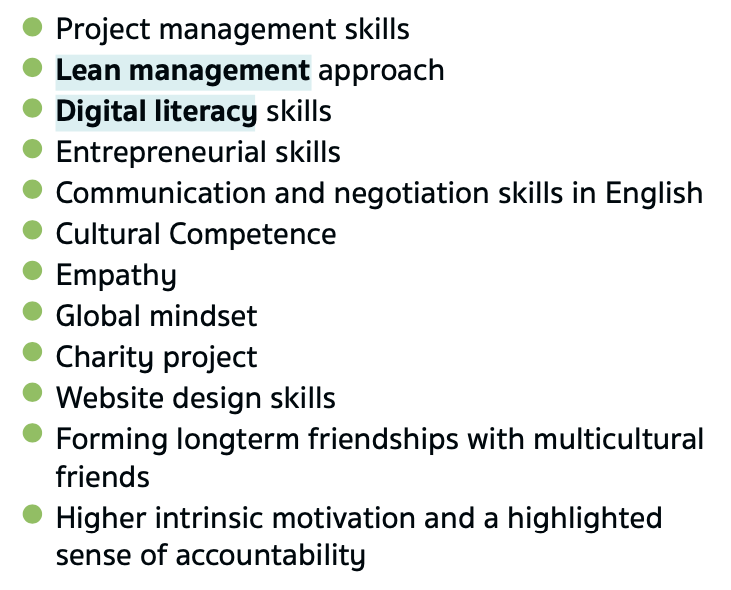-
AuthorPosts
-
-
March 2, 2020 at 4:12 pm #1593
EDU MattersKeymaster“Students who are best prepared for the future are change agents. They can have a positive impact on their surroundings, influence the future, understand others’ intentions, actions and feelings, and anticipate the short and long-term consequences of what they do.” – OECD 2018 “Education 2030” Position Paper
Since I launched the Global Competence Online Project in 2018, I’ve had multiple educators ask me ‘How do you manage to teach your students all the skills via online platforms?’
These are the skills they refer to:

My approach to keeping them motivated and interested in developing and upgrading the skills above incorporates the following:
1. Each student in the course comes from a different country and/or cultural background. In the last cohort, we had students from Uganda, Russia, China, France and Spain. In the first one – Colombia, China, UK. This setting gives students an immediate boost of curiosity, desire to understand the other person, and the feeling of excitement to learn together with kids from countries they’ve never been to or don’t know that well. It helps the students to develop Cultural Competence skills, Empathy, and Global Mindset, to name a few.

2. Everything I teach is connected to real life. And by everything I mean e-v-e-r-y-t-h-i-n-g. For instance, showcasing how many kids worldwide do not go to school today. 260 million is a big number that’s quite hard for young students to really grasp. I visually attach the number to the countries my students come from, making them experience the number on emotional levels and empathize with it (which inevitably leads to wanting to do something about it, to make it better. This approach helps students to get a higher intrinsic motivation and develop a broader view of concepts and situations.


Using Sustainable Development Goals is another great way to connect theory and real-life. My students do their research on the goals, present 3 top goals that they most resonate with on a daily basis, negotiate with each other to select a few goals, and start building the game based on the goals they’ve selected.

3. Inviting guest speakers from the field that the students’ game is focused on takes the course to a whole new level. In November 2019 the students were creating a STEM game. This is why I invited scientists that build quantum computers and explore outer space to speak for 10-20 minutes with the students and answer their questions. During the talk, some of the very important topics were covered- from gender equality at the workplace (students were pleased to find out that there’s an equal number of women and men in the field of astronomy in Argentina) to learning a scientist’s approach to discovering new things – trial and error. Since the course happens online, the topic of personal data protection and human rights is very important too. We were happy to have a human rights specialist who works with the Youth to speak during the course.


Of course, this is just a fraction of the tools that I use during the course, but it highlights some of the key approaches. In fact, it highlights the main methodology I use, which is Project-Based Learning. I covered the basics of PBL in a recent article when I found that many educators are hesitant in using PBL in their classrooms.
I hope that the points I described in this post can help educators to see content delivery from a practical perspective and adopt some of these tools into their practice. Any content we teach with connection to real-life will help our students develop the skills that they will really need and be grateful for in the future.
Which approach do you consider the most important in today’s education?
Aurthor: Margarita Lukavenko
Attachments:
You must be logged in to view attached files.
-
-
AuthorPosts
- This topic is empty.







